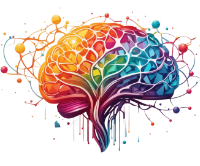Summary: Artificial Intelligence is no longer a side project or a far-off theory—it’s now part of the day-to-day reality in software engineering. A recent survey of 730 developers reveals a profession at a crossroads: not between man and machine, but between fear-driven narratives and practical adaptation. Whether you see AI as a threat or a tool, the only untenable position is standing still.
The Myth of Full Automation
Let’s confront the loudest voice in the room: the “doom prophets” who warn that AI is coming for our coding jobs. They point at rapid advances in generative AI and declare human programmers obsolete. Their argument rests on the idea that AI will be cheaper, faster, and—eventually—better. Companies, they say, won’t hesitate to slash payrolls and outsource logic to machines.
But here’s what they’re missing: AI doesn’t understand context. It doesn’t intuit edge cases. It can’t architect complexity with foresight. Coding is never just writing syntax. It’s engineering—balancing trade-offs, anticipating failure modes, understanding domain-specific constraints, and collaborating across teams. Removing humans from that equation isn’t automation. It’s fragility at scale.
So when some developers nervously ask, “Will AI replace programmers?” the better question is: “What kind of programming can AI actually do well?”
The Rise of the AI-Augmented Engineer
Most respondents in the survey land in a more grounded place. They don’t think AI is a replacement; they think it’s an assistant. A force multiplier. A speed enhancer. They’re not “saviors” or “tech evangelists”—they’re what I’d call realists. They recognize patterns. They value leverage. And they see AI for what it is: something that can eliminate repetition without eliminating relevance.
Tasks like boilerplate code generation, syntax checks, documentation scaffolding, and repetitive unit tests are already being handled by AI models with solid results. That’s not job destruction; that’s job refocus. One developer summed it up plainly: “If AI does eat programming, I’ll just switch to debugging AI.” That’s not sarcasm. That’s adaptation.
The engineers who stay relevant will be those comfortable with evolving toolchains. They’ll spend fewer hours writing lines of code and more time reviewing output, designing systems, and ensuring that AI-generated components align with real-world requirements. What skills rise in this new mix? Domain knowledge. Systems thinking. Creativity. Communication.
The False Choice Between Human and Machine
Some of the tension stems from binary thinking: either humans code, or machines do. But that’s not how software development works now—and it won’t in the future. If you’re in the trenches, you know that code isn’t the product. It’s just one layer. The product is quality, reliability, usability. Code is a means. If AI helps achieve the end faster and better, it becomes an extension of the developer, not a replacement.
Software engineering is also full of ambiguity—requirements shift, edge cases crop up, integrations break under real-world conditions. These aren’t problems you debug with autocomplete suggestions from a model. They aren’t even recognized problems until humans notice them.
So you have to ask yourself—if AI can write the obvious parts of the code, are you spending too much time doing what’s obvious?
Fear Is a Symptom of Stagnation
If engineers are anxious about AI, it often comes from a valid place: fear of irrelevance. That fear doesn’t come from over-reaction. It comes from under-adaptation. If someone’s job is reduced to cut-paste template coding, then yes, machines can and will take it. That’s the harsh truth. But that job was always vulnerable.
The opportunity here is clearer than the threat. Engineers who lean into AI tools will find themselves free to do more strategic work. Developers who become fluent in prompt engineering, who know how to guide LLMs to generate good scaffolding, and who can manipulate output with version control and domain awareness, will own the new stack.
Ask yourself: When was the last time you upgraded your toolkit—really upgraded it? Are you learning how these systems work? Or are you just reading headlines and hoping the wave passes over your workforce while you remain untouched? That’s not strategy. That’s wishful stalling.
Reality Isn’t Binary—It’s Iterative
The survey’s biggest insight wasn’t in raw numbers. It was in the contradiction software engineers now have to live with: AI is changing their work permanently—and also, AI is nowhere close to doing it alone. It’s messy. It’s nuanced. It’s iterative.
Adapting means resisting rigidity, not upgrades. It means letting go of roles that no longer make sense, even if we once took pride in them. Legacy isn’t immunity—it’s just inertia unless you’re willing to reinterpret it through today’s constraints. The real threat isn’t AI. It’s refusing to pivot.
Rewriting the Developer’s Job Description
In simple terms, the new developer equation is:
Old Role: Design + Code Everything by Hand
New Role: Design + Direct + Debug AI-Augmented Systems
That’s not science fiction. That’s now. This shift requires new habits: validating AI output, fine-tuning prompts, cross-checking test cases, and keeping a tight grip on architecture. But the payoff is control. And the programmers still in control will define the next decade—while others just comment on it.
This isn’t a bifurcation between winners and losers. It’s a ladder. The next rung is closer than you think—if you’re willing to climb it. Start small: pick one AI code tool. Learn its limits. Study those edge cases it screws up. Study why. Train yourself to catch those misses. Make that a habit and you’ll always stay one step ahead of the curve—and ten ahead of those pretending the curve doesn’t exist.
#SoftwareEngineering #AIInTech #DeveloperTools #FutureOfWork #CodingWithAI #ModernEngineering #MachineSupportNotReplacement
More Info — Click HereFeatured Image courtesy of Unsplash and Brooke Cagle (Uduc5hJX2Ew)
